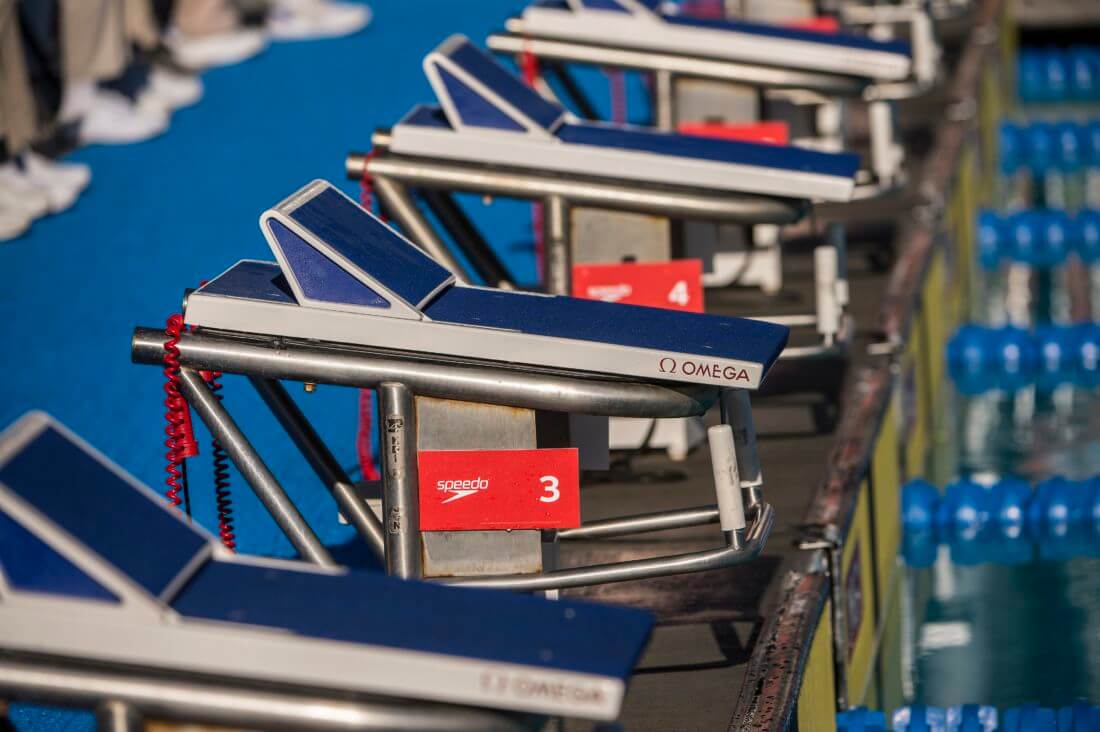Why the First Second of a Race Changed Forever
Every swimming race is won or lost in four moments: the start, the stroke, the turn and the finish. In competitive swimming, every fraction of a second counts, but it all begins with the start. A race can be won or lost before a swimmer even enters the water. The start is the sport’s biggest gamble, and over the past two decades, it has undergone dramatic change. Coaches and researchers call the start one of the three pillars of performance. Beyond that, for sprinters, the dive is a significant portion of the race. As a result, the start is one of the most studied and transformed parts of the sport.
Grab vs. Track Start: A Comparison
The grab start first appeared in the late 1960s, developed by University of Southern California coach Eric Hanauer to help one of his swimmers avoid false starts. The technique placed both feet at the front of the block for a simultaneous push that reduced early takeoffs. The grab started quickly, gained traction, and became the standard technique of its era. A famous example of the success of the grab start is Mark Spitz. At the 1972 Munich Olympics, Spitz relied on the grab start to win seven gold medals, a feat that secured the start’s legacy in competitive swimming.
While this start was the standard at the time, the limitations soon became clear. With both feet positioned forward, swimmers struggled to generate explosive power. Consequently, this led to the birth of the track start. The track start placed one foot forward and one back, giving swimmers a steadier base to produce maximum force off the block. By the end of the 20th century, the track start had overtaken the grab start at most levels of competition. However, the grab start did not disappear entirely, as it continues to find occasional use in relay exchanges.
Flat Blocks to OSB11
The next major shift that occurred in swimming starts was the debut of the Omega OSB11 starting block. Omega introduced it at the 2008 Beijing Olympics. The OSB11 featured a major innovation, an adjustable back wedge. This adjustable wedge, also often referred to as the “fin,” was approved by FINA (now World Aquatics) shortly after its release. The fin allowed swimmers to press their back foot against a stable surface, more closely mimicking the stance of a track sprinter.
The new block was designed to reduce the risk of slipping and gave athletes greater leverage to push powerfully off the start. The fin added stability and force, improving speed and entry control. Both are critical in sprint races, where hundredths of a second can separate first from second place. By 2012, the OSB11 had become the international standard. What began as an equipment upgrade quickly became a focus of training. Swimmers now devote more time to mastering the art of the swimming start.
Proof in Study
A 2012 study by Western University researchers Donna Murrell and Andrew Dragunas showed that swimmers were faster to two meters using the track start on the OSB11 block. This experiment involved four varsity swimmers, two men and two women. Each swimmer performed three grab starts and three track starts. The researchers measured the time to two meters because it isolated only the power generated off the block. In every case, swimmers reached the two-meter mark more quickly with the track start, averaging a tenth of a second faster. Although the study was small, it demonstrated a clear and consistent advantage for the track start over the grab start.
Modern Impact
Today, the OSB11 block is standard at international meets, NCAA championships, and even many high school competitions. It has become a staple of the sport, with young swimmers learning the fin early to improve their development. Coaches devote training time to help swimmers get comfortable with fin setups and finding their ideal position. In addition, the evolution of the start has reshaped race preparation. Starts now demand equal focus alongside each stroke, turn and finish. Sprinters treat the first two meters as critical. Ultimately, the start has gone from a gamble to a calculated edge. Mark Spitz used the grab start to win seven gold medals. Today’s swimmers rely on the wedge-assisted track start. A simple push has become science. Every hundredth still matters, but now athletes leave the block faster and sharper than ever.
